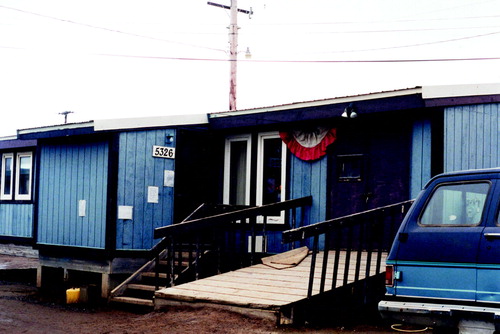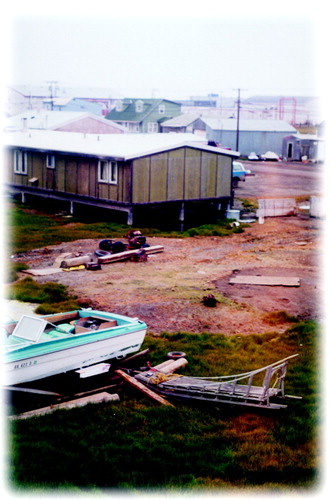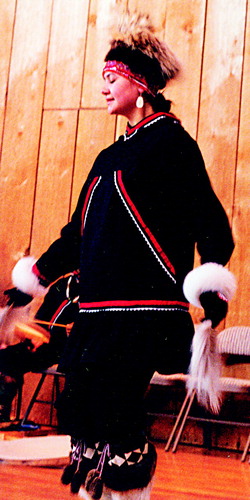Alaskan Natives Face Complex Psychiatric Stressors
 The mental health difficulties that Greg McCarthy, M.D., and other psychiatrists often see in rural Alaska, especially among Alaskan Natives living there, are depression, alcoholism, suicides, homicides, and sexual abuse (see article on Original article: page 6). The prevalence of such problems raise a crucial question: Why are they so widespread in rural Alaska and among this population?
The mental health difficulties that Greg McCarthy, M.D., and other psychiatrists often see in rural Alaska, especially among Alaskan Natives living there, are depression, alcoholism, suicides, homicides, and sexual abuse (see article on Original article: page 6). The prevalence of such problems raise a crucial question: Why are they so widespread in rural Alaska and among this population?
 Perhaps the darkness that Alaskans, especially Alaskans in the far North, experience much of the year is one reason. A 2002 Canadian Journal of Psychiatry study found a positive linear relation between variation in suicide rates and geographic latitude, using suicide-rate data from 20 countries. And as McCarthy pointed out to Psychiatric News, suicide rates in Alaska are higher than those in the lower 48 states, and the suicide rates for Alaskan Natives are even higher than for Alaskans in general.
Perhaps the darkness that Alaskans, especially Alaskans in the far North, experience much of the year is one reason. A 2002 Canadian Journal of Psychiatry study found a positive linear relation between variation in suicide rates and geographic latitude, using suicide-rate data from 20 countries. And as McCarthy pointed out to Psychiatric News, suicide rates in Alaska are higher than those in the lower 48 states, and the suicide rates for Alaskan Natives are even higher than for Alaskans in general.
Another possible cause is genetic susceptibility to alcoholism, he noted.
A third likely cause is unresolved multigenerational anger among Alaskan Natives toward the Russians and white Americans who exploited them for several hundred years, McCarthy suspects. And a fourth possible explanation is the tendency of Alaskan Natives to repress negative emotions.
 Whatever the origins of such problems, however, their prevalence could have a serious impact on the future of Alaskan Natives. “I think over the long haul they will make it,” McCarthy predicts. “After all, they have lived in Alaska for thousands of years.” And Bunna Edwardson, a 27-year-old Inupiaq (Eskimo) living in Barrow, is downright bullish about life in Barrow and the future of his people.
Whatever the origins of such problems, however, their prevalence could have a serious impact on the future of Alaskan Natives. “I think over the long haul they will make it,” McCarthy predicts. “After all, they have lived in Alaska for thousands of years.” And Bunna Edwardson, a 27-year-old Inupiaq (Eskimo) living in Barrow, is downright bullish about life in Barrow and the future of his people.
Edwardson lived in Wyoming for two years, but missed Barrow so much that he came back. After all, he said, he knows just about everybody in Barrow and has many relatives there. He enjoys driving tourists around in his four-wheel-drive recreational vehicle, claims that whale meat is better than steak, and says that one of his greatest memories is when flushing toilets came to Barrow.
“Do you want to meet my family?” he asked a customer for one of his adventure tours recently. “Sure,” she said. So he drove her over to his family’s house. “Look!,” he said. “I can see Mom through the window, she’s on the Internet.” He then whipped out his cell phone, punched in his family’s number, and his 12-year-old sister raced out of the house, up to his RV, and gave him a hug.
“Life in Barrow is awesome!,” he exclaimed. “After all, it’s natural selection, survival of the fittest.”
Whether the future of Alaskan Natives in rural areas is as rosy as Edwardson paints, there is little doubt that a number of young Alaskan Natives in Alaska’s biggest city—Anchorage—are faring well. They are not only attending top colleges and studying tough subjects like aeronautical engineering, but maintaining aspects of their traditional cultures. In fact, as a dozen or so announced at the Alaska Native Heritage Center in Anchorage recently: “Yes, we can do the electric slide, but today we’re going to do some traditional Yupik [Eskimo] dances for you.” ▪



